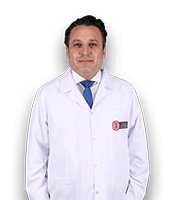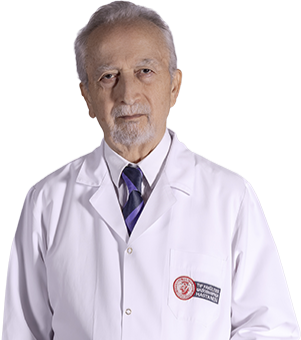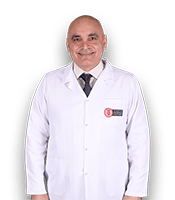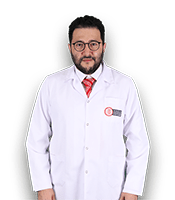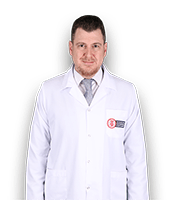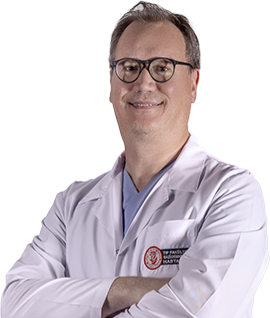What is Cardiovascular Surgery (CVS)?
Cardiovascular Surgery (CVS) is a specialized medical field that focuses on the diagnosis and treatment of diseases related to the heart, blood vessels, and circulatory system through surgical methods. Conditions such as heart valve disorders, coronary artery disease, aortic aneurysms, and peripheral vascular diseases are managed by surgeons with advanced expertise in this area. With ongoing technological advancements, CVS also encompasses modern approaches such as minimally invasive techniques, robotic surgery, and endovascular procedures.
Cardiovascular surgeons are highly trained professionals who perform complex operations involving anatomically delicate structures, often under urgent or life-threatening conditions. This specialty not only involves surgical interventions but also includes comprehensive, multidisciplinary treatment plans aimed at improving the patient’s long-term quality of life.
Which diseases does Cardiovascular Surgery (CVS) treat?
The Department of Cardiovascular Surgery is responsible for the surgical treatment of numerous congenital or acquired heart and vascular diseases. Many of these conditions pose a serious threat to life if not treated promptly. CVS specialists successfully perform high-risk operations in both adult and pediatric patients.
Common conditions treated by CVS include:
Coronary Artery Disease (CAD): A narrowing or blockage in the arteries supplying oxygen-rich blood to the heart muscle, potentially leading to angina or heart attacks. Coronary artery bypass grafting (CABG) is the most common surgical treatment.
Heart Valve Diseases: Stenosis (narrowing) or regurgitation (leakage) in mitral, aortic, tricuspid, or pulmonary valves can lead to heart failure. These are treated with valve repair or replacement surgeries.
Aortic Aneurysm and Dissection: Life-threatening conditions caused by the dilation or tearing of the aortic wall, requiring urgent open or endovascular surgical repair.
Peripheral Artery Disease (PAD): Narrowing or blockage in arteries supplying the limbs and other organs, leading to pain, mobility issues, or risk of limb loss.
Carotid Artery Disease: Narrowing of the arteries supplying the brain increases the risk of stroke. It is treated with carotid endarterectomy or stenting.
Congenital Heart Defects: Structural abnormalities such as atrial septal defect (ASD), ventricular septal defect (VSD), or abnormal great vessel positioning may require surgical correction in both children and adults.
Venous Disorders: Conditions like deep vein thrombosis (DVT), varicose veins, and chronic venous insufficiency are managed surgically or with interventional techniques.
Heart Failure and Cardiomyopathies: In cases where the heart’s pumping ability is severely impaired, surgical options such as heart transplantation or mechanical circulatory support (LVAD/BiVAD) may be necessary.
Cardiac Tumors: Benign (e.g., myxoma) or malignant tumors of the heart are surgically excised when indicated.
Infective Endocarditis: Infections affecting the heart valves often require surgical removal of infected tissues and valve repair or replacement.
Pulmonary Embolism: In severe cases, life-threatening blood clots in the lungs are removed via surgical embolectomy.
Traumatic Cardiac and Vascular Injuries: Life-threatening injuries caused by blunt trauma or penetrating objects often necessitate emergency surgical repair.
Additionally, in advanced stages of heart failure:
Heart Transplantation: For patients who are unresponsive to all other treatments, heart transplantation is a life-saving option when a suitable donor is available.
Mechanical Circulatory Support (LVAD/BiVAD): These devices help support the heart’s pumping function and can be used as a bridge to transplant or as long-term therapy in select patients.
Cardiovascular Surgery integrates cutting-edge technology, multidisciplinary collaboration, and a patient-centered approach to deliver optimal care and significantly improve the quality of life for individuals facing complex heart and vascular conditions.
Which Diagnostic and Imaging Methods Are Used in Cardiovascular Surgery (CVS)?
In Cardiovascular Surgery, accurate diagnosis is a critical step for timely and effective intervention. Since many heart and vascular diseases may progress silently, comprehensive evaluation and advanced diagnostic tools play a vital role. CVS specialists utilize both traditional and high-resolution imaging techniques to assess the extent and severity of disease and to plan the most appropriate treatment approach.
The primary diagnostic and evaluation methods used in CVS include:
Physical Examination: Initial clues are obtained through assessment of heart sounds, pulse, skin color, and the presence of edema.
Electrocardiography (ECG): Measures the electrical activity of the heart, helping to detect arrhythmias and signs of ischemia.
Echocardiography (ECHO): Ultrasound imaging evaluates heart valves, chambers, and pumping efficiency. Includes transthoracic (TTE) and transesophageal (TEE) types.
Chest X-ray: Assesses heart size, fluid accumulation in the lungs, and large vessel conditions.
CT Angiography: Provides detailed images of vessels, highlighting stenosis, aneurysms, and dissections.
Coronary Angiography (Conventional Angiogram): A contrast dye is injected into the heart’s arteries and imaged with X-ray to identify blockages.
Cardiac MRI (CMR): Especially useful in evaluating cardiomyopathies and congenital heart diseases.
Stress Test (Exercise Tolerance Test): Assesses heart function and potential vessel blockages during physical exertion.
Nuclear Cardiology (Myocardial Perfusion Scintigraphy): Evaluates the blood flow and viability of the heart muscle.
Doppler Ultrasound: Used to assess peripheral vascular conditions in the legs, carotid arteries, and other vessels.
Laboratory Tests: Includes cardiac enzymes (troponin, CK-MB), coagulation markers, cholesterol levels, and blood glucose to assess cardiovascular risk.
These advanced diagnostic tools allow for a precise determination of disease type and stage, facilitating a personalized surgical or interventional treatment plan. Early diagnosis can be lifesaving in cardiovascular conditions.
Which Treatment Methods Are Used in Cardiovascular Surgery (CVS)?
Cardiovascular Surgery brings together various approaches—including open surgery, minimally invasive, and endovascular techniques—to treat life-threatening heart and vascular conditions. Treatment plans are personalized based on the type and severity of the disease as well as the patient’s overall health. The goal is not only to eliminate the disease surgically but also to improve long-term outcomes and quality of life while minimizing complications.
Coronary Artery Bypass Grafting (CABG): Blocked coronary arteries are bypassed using vessels from other parts of the body (e.g., saphenous vein, internal mammary artery) to restore blood flow to the heart.
Valve Surgeries (Repair or Replacement): Malfunctioning mitral, aortic, tricuspid, or pulmonary valves are surgically repaired or replaced with mechanical or biological prostheses.
Aortic Surgeries: Life-threatening conditions such as aneurysms or dissections of the aorta are treated by replacing the diseased segment with a graft, either via open surgery or endovascular techniques like EVAR or TEVAR.
Heart Transplantation: For patients with end-stage heart failure unresponsive to medical therapy, a healthy donor heart is surgically implanted to restore cardiac function.
Mechanical Circulatory Support (LVAD, BiVAD): Mechanical devices are implanted in the left or both ventricles to assist heart pumping, either as a bridge to transplantation or as long-term therapy.
Carotid Endarterectomy: A surgical procedure to remove plaque buildup in the carotid arteries, thereby reducing the risk of stroke.
Peripheral Vascular Surgery: Treats stenosis or blockage in peripheral arteries supplying the limbs or organs using bypass or stent placement.
Varicose Vein Surgery and Laser Treatments: Veins affected by chronic venous insufficiency are removed surgically or closed using laser or radiofrequency therapy.
Minimally Invasive Cardiac Surgery: Performed through smaller incisions, resulting in less pain, shorter hospital stays, and faster recovery. Preferred for valve repairs and selected bypass cases.
Endovascular Interventions: Catheter-based procedures through the groin or arm for placing stents or grafts inside diseased vessels—ideal for high-risk patients.
High-Risk Patient Management: Customized surgical plans and close perioperative monitoring are implemented for patients with diabetes, renal failure, COPD, or advanced age.
Transcatheter Aortic Valve Implantation (TAVI): A minimally invasive method to replace the aortic valve via the femoral artery in patients who are not candidates for open surgery.
Hemodialysis Access Surgery: Surgical creation of an arteriovenous fistula or graft for long-term dialysis access in chronic kidney disease patients.
ECMO (Extracorporeal Membrane Oxygenation): A life-support system that temporarily takes over heart or lung function, often used after cardiac surgery or in severe respiratory failure.
What Are the Surgical Procedures Performed in Cardiovascular Surgery (CVS)?
The Department of Cardiovascular Surgery plays a vital role in the diagnosis, treatment, and surgical management of numerous life-threatening cardiac and vascular diseases. Surgical procedures in this field may be scheduled or performed emergently, depending on the nature and urgency of the condition. Operations targeting the heart itself, the valves, major arteries, and peripheral vessels require a high level of expertise, precision, and advanced technological infrastructure.
In addition to conventional open-heart surgeries, CVS surgeons successfully perform minimally invasive procedures, endovascular interventions, and mechanical circulatory support operations. These procedures are supported by advanced imaging technologies, multidisciplinary case management, and intensive care monitoring, resulting in high success rates.
Common surgical procedures performed by the CVS team include:
Coronary Artery Bypass Grafting (CABG): Bypassing blocked coronary arteries using grafts from other vessels (e.g., saphenous vein or internal mammary artery) to restore blood flow to the heart.
Valve Surgeries (Repair or Replacement): Surgical treatment of stenosis or regurgitation in the mitral, aortic, tricuspid, or pulmonary valves with valve repair or prosthetic replacement (mechanical or biological).
Aortic Aneurysm Surgery: Removal and graft replacement of dilated sections in the thoracic or abdominal aorta.
Aortic Dissection Repair: Emergency repair or grafting of the torn layers of the aortic wall.
Heart Transplantation: Implantation of a healthy donor heart in patients with end-stage heart failure.
Left Ventricular Assist Device (LVAD) and Biventricular Assist Device (BiVAD) Implantation: Mechanical devices that support heart pumping function either temporarily (as a bridge to transplant) or permanently.
Cardiac Tumor Resection: Surgical removal of primary (e.g., myxoma) or metastatic tumors of the heart.
Pericardiectomy: Surgical removal of the pericardium in cases of chronic constrictive pericarditis or recurrent pericardial effusion.
Cardiac Tamponade Surgery (Pericardial Window): Emergency drainage of accumulated fluid around the heart.
Left Ventricular Aneurysm Resection (Ventricular Reconstruction): Excision of weakened or ballooned heart muscle post-myocardial infarction.
Pulmonary Embolectomy: Surgical removal of large blood clots from the pulmonary arteries.
Surgery for Infective Endocarditis: Debridement of infected cardiac tissues and valve replacement due to bacterial infection.
Correction of Congenital Heart Defects: Surgical repair of defects such as atrial septal defect (ASD), ventricular septal defect (VSD), or Tetralogy of Fallot.
Carotid Endarterectomy: Removal of plaque from the carotid arteries to restore blood flow to the brain and reduce stroke risk.
Peripheral Arterial Bypass Surgery: Restoring blood flow to limbs or organs by bypassing blocked arteries.
Varicose Vein Surgery (Stripping): Surgical removal of varicose veins in cases of chronic venous insufficiency.
Hemodialysis Access Surgery (AV Fistula/Graft): Creation of permanent vascular access for patients requiring long-term dialysis.
Pacemaker and Implantable Cardioverter Defibrillator (ICD) Placement: Implantation of devices to regulate heart rhythm or deliver life-saving shocks in arrhythmia cases.
Device Revisions and Battery Replacements: Repositioning or replacing the battery of previously implanted cardiac devices.
Surgical Cannulation for ECMO: Open surgical placement of large-bore cannulas for extracorporeal membrane oxygenation (ECMO) therapy.
Gaziosmanpaşa Hospital’s Experience and Expertise in Cardiovascular Surgery
Yeni Yüzyıl University Gaziosmanpaşa Hospital is one of Istanbul’s leading centers for Cardiovascular Surgery, offering high-quality healthcare services supported by an experienced academic team and state-of-the-art medical technology. Our hospital provides a wide range of surgical treatments, from routine vascular procedures to advanced interventions such as heart transplantation and mechanical circulatory support.
Our team of skilled surgeons achieves high success rates in the surgical treatment of coronary artery disease, heart valve disorders, aortic aneurysms, congenital heart anomalies, rhythm disturbances, and peripheral vascular diseases. Personalized treatment plans are developed in line with current guidelines and ethical standards.
All clinical practices are based on internationally recognized medical guidelines. Surgical decisions are made in accordance with the recommendations of the American Heart Association (AHA), European Society of Cardiology (ESC), and Turkish Society of Cardiovascular Surgery, ensuring that patients receive the most up-to-date and reliable treatment options.
For patients with advanced heart failure, complex surgeries such as heart transplantation and LVAD implantation are performed with a multidisciplinary approach. In addition, procedures like ECMO and TAVI offer safe alternatives for high-risk patients requiring life-sustaining interventions.
Our hospital is equipped with hybrid operating rooms, a 24/7 cardiac surgical ICU, and perioperative care provided by cardiac anesthesiologists and intensive care specialists—ensuring maximum patient safety, faster recovery, and minimal complication rates.
Preferred by patients not only from Istanbul but also across the Marmara region and throughout Turkey, Gaziosmanpaşa Hospital continues to serve as a regional reference center for excellence in cardiovascular surgery.
When it comes to heart health, experience, technology, and precision must come together. At Gaziosmanpaşa Hospital’s Department of Cardiovascular Surgery, we are proud to combine these pillars to provide long-term safety and well-being to all our patients.